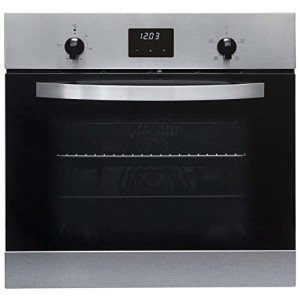The Rise of Integrated Ovens and Hobs: A Comprehensive Guide
In modern kitchen areas, space optimization and aesthetic appeal are critical. Integrated ovens and hobs have promptly increased to prominence, integrating technology, functionality, and design into one smooth cooking experience. This article explores the features, advantages, and factors to consider of integrated ovens and hobs, along with often asked questions about these important kitchen home appliances.
What are Integrated Ovens and Hobs?
Integrated ovens and hobs describe kitchen appliances that are created to mix into cabinetry while providing a wide range of cooking functions. Unlike freestanding designs, these built-in units are typically set up within kitchen cabinets, enabling a streamlined and organized appearance.
Kinds Of Integrated Ovens
- Single Ovens: These flexible ovens are ideal for smaller kitchen areas or for those who cook in smaller sized batches.
- Double Ovens: Perfect for larger families or devoted cooks, double ovens offer additional cooking space and flexibility, making it possible for numerous meals to be prepared concurrently.
- Steam Ovens: For health-conscious customers, steam ovens provide a much healthier cooking approach that retains nutrients in food.
- Microwave Ovens: Often designed as integrated systems, microwave are perfect for fast cooking and reheating jobs.
Kinds Of Integrated Hobs
- Induction Hobs: These hobs use electromagnetic energy to cook food effectively and rapidly. Going In this article are applauded for their security functions and exact temperature control.
- Gas Hobs: Offering conventional cooking techniques, gas hobs supply instantaneous heat and are favored by lots of professional chefs.
- Ceramic Hobs: These hobs offer smooth surface areas that are easy to clean and maintain. They supply an efficient heating approach but may take longer than gas or induction.
Advantages of Integrated Ovens and Hobs
Incorporating ovens and hobs into kitchen cabinetry includes different benefits, making them an attractive option for home style and cooking lovers alike.
Aesthetic Appeal
- Streamlined Design: Integrated models offer a unified appearance that boosts the total visual of the kitchen.
- Personalized Layout: Homeowners can create their kitchen without large home appliances disrupting the flow.
Space Optimization
- Efficient Use of Kitchen Space: By perfectly fitting into kitchen cabinetry, integrated units offer more functional workspace.
- Removal of Clutter: Integrated units reduce visual clutter, developing a more orderly environment.
Improved Functionality
- Advanced Features: Many integrated ovens and hobs come with advanced innovation such as clever controls, precise temperature level settings, and multiple cooking functions.
- Customized Cooking Experience: Users can individualize their cooking experience with differing cooking techniques, like convection, baking, or barbecuing.
Increased Home Value
- Modern Appeal: A well-designed kitchen with integrated devices can significantly boost a home's resale value, making it more attractive to possible buyers.
Factors To Consider When Choosing Integrated Ovens and Hobs
While integrated ovens and hobs offer various advantages, there are several elements to consider when choosing the right model for your kitchen.
Kitchen Space and Layout
- Size: Ensure that the integrated oven and hob fit the existing cabinetry and kitchen design.
- Ventilation: Proper ventilation is important, specifically for gas hobs. Ensure that the kitchen is effectively aerated to reduce cooking smells and excess heat.
Setup Requirements
- Expert Installation: Integrated systems might require professional setup to ensure they fit and operate correctly.
- Plumbing Needs: Some steam ovens might need water connections, which must be prepared for throughout setup.
Budget plan
- Expense Variance: Integrated ovens and hobs can range in cost depending on brand name, features, and installation costs.
- Long-Term Savings: While the initial investment may be higher, think about prospective energy cost savings and durability with time.
Brand name and Features
- Reputation: Research respectable brands understood for dependability and client service.
- Functions: Look for features that align with cooking choices, such as self-cleaning options, Wi-Fi connection, and diverse cooking modes.
Comparison of Integrated Ovens and Hobs
| Feature | Integrated Ovens | Integrated Hobs |
|---|---|---|
| Design | Smooth built into cabinets | Flush with counter tops |
| Cooking Type | Convection, steam, microwave | Gas, induction, electric |
| Cleaning | Self-cleaning choices available | Easy-to-clean surface areas |
| Energy Efficiency | Usually energy-efficient | Varies by type (induction is best) |
| Installation | Needs professional assistance | May require unique venting (for gas) |
Frequently Asked Questions (FAQs)
1. What is the primary benefit of an integrated oven over a freestanding one?
Integrated ovens offer a cleaner, more streamlined appearance while making the most of kitchen area.
2. Are integrated hobs simple to set up?
The majority of integrated hobs require expert setup, especially gas systems, due to safety requirements.
3. Can I position an integrated oven throughout my kitchen?
Integrated ovens should be positioned within proper kitchen cabinetry developed for their size and ventilation needs.
4. Do integrated ovens and hobs need unique upkeep?
Routine cleansing and checks of seals and functions are vital to keep performance, but they do not need unique maintenance beyond basic home appliance care.
5. How do I select in between gas and induction hobs?
It depends on personal preference, cooking routines, and budget plan. Induction is quicker and more secure, while gas provides immediate heat and more control.
Integrated ovens and hobs are an important function in contemporary kitchen style, providing both aesthetic appeal and valuable performance. By considering the advantages, layout, setup requirements, and brand credibility, house owners can make informed choices that boost their cooking experiences. As kitchen trends continue to evolve, integrated devices will likely remain at the leading edge, developing spaces that are both stunning and useful.

